The
RESUME
and
COVER LETTER
PHRASE BOOK What to Write
to Get the
Job That's Right
PLUS 50
PHRASES
YOU SHOULD
NEVER USE! NANCY SCHUMAN
CSP, VICE PRESIDENT OF LLOYD STAFFING
AND BURTON JAY NADLER Copyright 2011 by F+W Media, Inc.
Copyright 2011 by F+W Media, Inc.
All rights reserved.
This book, or parts thereof, may not be reproduced in any form without permission from the publisher; exceptions are made for brief excerpts used in published reviews. Published by
Adams Media, a division of F+W Media, Inc.
57 Littlefield Street, Avon, MA 02322. U.S.A.
www.adamsmedia.com ISBN 10: 1-4405-0981-6
ISBN 13: 978-1-4405-0981-0
eISBN 10: 1-4405-0993-X
eISBN 13: 978-1-4405-0993-3 Printed in the United States of America. 10 9 8 7 6 5 4 3 2 1 Library of Congress Cataloging-in-Publication Data
A cup of comfort for couples / edited by Colleen Sell.
p. cm.
ISBN 978-1-4405-0200-2
1. 2. 2.
Man-woman relationships. 3. Love. I. Sell, Colleen.
HQ801.C84 2011
306.7092'2 dc22
2010038484 Contains material adapted and abridged from The Everything Cover Letter Book, 2nd Edition, by Burton Jay Nadler, copyright 2005 by F+W Media, Inc., ISBN 10: 1-59337-335-X, ISBN 13: 978-1-59337-335-1; The Everything Resume Book, 3rd Edition, by Nancy Schuman, copyright 2008 by F+W Media, Inc., ISBN 10: 1-59869-637-8, ISBN 13: 978-1-59869-637-0; and Resume Buzz Words, by Erik Herman and Sarah Rocha, copyright 2004 F+W Media, Inc., ISBN 10:1-59337-114-4, ISBN 13: 978-1-59337-114-2. This publication is designed to provide accurate and authoritative information with regard to the subject matter covered.
It is sold with the understanding that the publisher is not engaged in rendering legal, accounting, or other professional advice. If legal advice or other expert assistance is required, the services of a competent professional person should be sought. From a Declaration of Principles jointly adopted by a Committee of the American Bar Association and a Committee of Publishers and Associations Many of the designations used by manufacturers and sellers to distinguish their product are claimed as trademarks. Where those designations appear in this book and Adams Media was aware of a trademark claim, the designations have been printed with initial capital letters. This book is available at quantity discounts for bulk purchases.
For information, please call 1-800-289-0963.
Chapter 1
Cover Letter Writing Essentials
WRITING A COVER LETTER is often an annoying and sometimes difficult step in the job application process. For many people, finding the right words to introduce themselves and their experiences to a potential employer is stressful.
However, writing a cover letter that lands you an interview can be achieved more easily than you think. Following the RIGHT formula, discussed in the next paragraph, can get you started. It also helps to familiarize yourself with the different types of cover letters used to contact potential employers. You'll also want to understand the basic components of a cover letter each paragraph in the document seeks to communicate specific strategically targeted and job-function-focused information that you don't want to accidentally leave out.
Write Your Cover Letter the RIGHT Way
Writing your cover letter is as simple as following a five-step process. Just think of the acronym R-I-G-H-T.
It stands for Review, Identify, Generate, Hone, Transmit:  1. Review Samples, Postings, or Descriptions To inspire initial efforts and motivate actions, review sample cover letters and postings as well as job descriptions. Think about the phrases or special language used in these items. Key phrases in job postings must be transformed into the best paragraphs in your cover letters. If imitation is the most sincere form of flattery, it can be the best cover letter-writing strategy.
1. Review Samples, Postings, or Descriptions To inspire initial efforts and motivate actions, review sample cover letters and postings as well as job descriptions. Think about the phrases or special language used in these items. Key phrases in job postings must be transformed into the best paragraphs in your cover letters. If imitation is the most sincere form of flattery, it can be the best cover letter-writing strategy.  2.
2.
Identify Resume Key Points Look at your resume and think about how it relates to the job for which you're applying. Identify key points that you wish to highlight in your cover letter. These should be field-focused qualities as well as directly related academic, employment, or co-curricular achievements. What is it about your resume that you think is most strategically linked to targeted career fields and the specific job or particular functional areas of an employer? What two resume entries do you want the cover letter reader to examine in detail?  3. Generate a Draft Keep your first draft to one page if possible, but don't worry too much about length. Later, you'll edit to the desired word count.
3. Generate a Draft Keep your first draft to one page if possible, but don't worry too much about length. Later, you'll edit to the desired word count.
Use the examples in the Sample Cover Letter Phrases section for inspiration, but don't copy word for word any of the samples that inspire you. Just get some ideas down on paper or on screen. Don't feel pressured to generate your final draft first.  4. Hone a Finished Version This is when you'll edit the content to achieve maximum effectiveness. and impact.
4. Hone a Finished Version This is when you'll edit the content to achieve maximum effectiveness. and impact.
The finished version should not contain typos or any major grammatical or style errors. Remember, this is your first writing assignment for your prospective employer.  5. Transmit via E-mail or Fax, Then Mail Once done, don't delay communication. There truly is no reason to wait. Never procrastinate.
5. Transmit via E-mail or Fax, Then Mail Once done, don't delay communication. There truly is no reason to wait. Never procrastinate.
Proceed to the next section to learn details regarding cover letter format, content, and specifics to completing the five steps to cover letter success.
When to Send Which Letter
The lists within this section define different types of cover letters, the circumstances for which they are appropriate, and to whom they are sent. Later, you will review samples phrases to include in each type of letter.
 Letters of Application Used When Responding to Postings
Letters of Application Used When Responding to Postings These letters target:
- Confidential Postings (when employers are not identified). These letters must focus on the job descriptions and the skills you possess to succeed in the position.
- Employer Identified Postings (with the employer clearly noted, yet a contact name may not be given).
These letters should reveal research on the company. If you don't have someone to address letters to, use memo format.
- Employment Agencies (when employers are not identified). When your letter is sent to a search professional, use the phrase judge my candidacy worthy of an interview for this position with your client's firm.
- Executive Search Firms (when employers are not identified). As with positions posted by employment agencies, focus your letter on motivating the reader to support your candidacy and forward documentation to the client who is the hiring organization, with a recommendation to interview.
These firms deal with more senior positions.
 Letters of Introduction Addressed to People and Places
Letters of Introduction Addressed to People and Places These letters are transmitted:
- As Broadcast Letters. These letters are very popular yet least effective if done as opened and unfocussed letters sent to hundreds of employers. They can be effective if they identify specific career fields, functional areas of interest, and particular firms. Be sure to cite the employer's name in these letters.

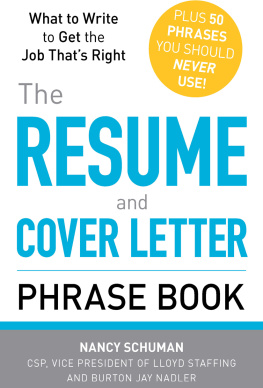
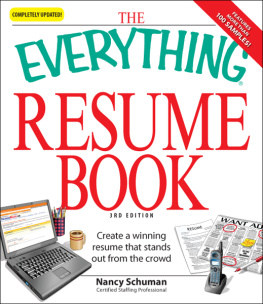
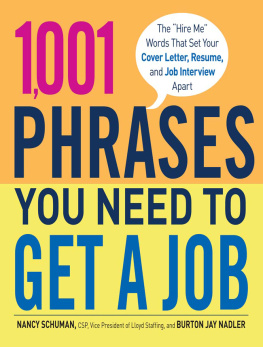
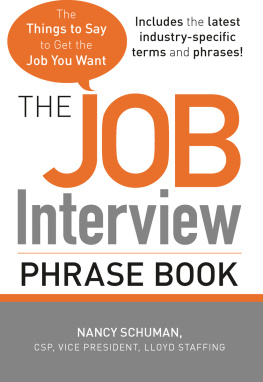

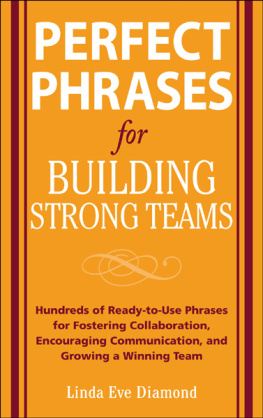
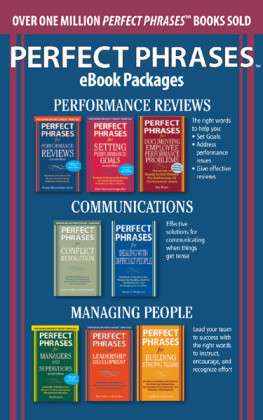
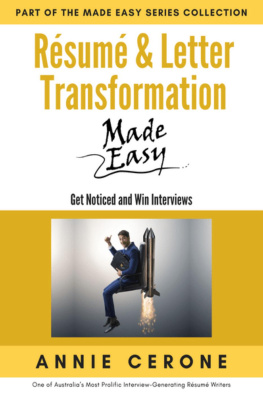
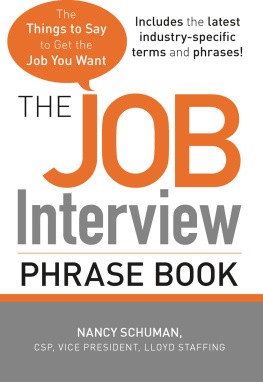

 Copyright 2011 by F+W Media, Inc.
Copyright 2011 by F+W Media, Inc. 1. Review Samples, Postings, or Descriptions To inspire initial efforts and motivate actions, review sample cover letters and postings as well as job descriptions. Think about the phrases or special language used in these items. Key phrases in job postings must be transformed into the best paragraphs in your cover letters. If imitation is the most sincere form of flattery, it can be the best cover letter-writing strategy.
1. Review Samples, Postings, or Descriptions To inspire initial efforts and motivate actions, review sample cover letters and postings as well as job descriptions. Think about the phrases or special language used in these items. Key phrases in job postings must be transformed into the best paragraphs in your cover letters. If imitation is the most sincere form of flattery, it can be the best cover letter-writing strategy.